
Glen or Glenda is a 1953 American independent exploitation film directed, written by and starring Ed Wood, and featuring Wood's then-girlfriend Dolores Fuller and Bela Lugosi. It was produced by George Weiss who also made the exploitation film Test Tube Babies that same year.

James Addison Reavis, later using the name James Addison Peralta-Reavis, the so-called Baron of Arizona, was an American forger and fraudster. He is best known in association with the Peralta land grant, also known as the Barony of Arizona, a pair of fraudulent land claims, which if certified, would have granted him ownership of over 18,600 square miles (48,200 km2) of land in central Arizona Territory and western New Mexico Territory. During the course of the fraud, Reavis collected an estimated US$5.3 million in cash and promissory notes through the sale of quitclaims and proposed investment plans.

The Fly is a 1958 American science fiction horror film and the first installment in The Fly film series. The film was produced and directed by Kurt Neumann and stars David Hedison, Patricia Owens, Vincent Price, and Herbert Marshall. The screenplay by James Clavell is based on the 1957 short story of the same name by George Langelaan.

Samuel Michael "Sam" Fuller was an American film director, screenwriter, novelist, journalist, actor, and World War II veteran known for directing low-budget genre movies with controversial themes, often made outside the conventional studio system. Fuller wrote his first screenplay for Hats Off in 1936, and made his directorial debut with the Western I Shot Jesse James (1949). He would continue to direct several other Westerns and war thrillers throughout the 1950s.

Robert Harriot Barrat was an American stage, motion picture, and television character actor.
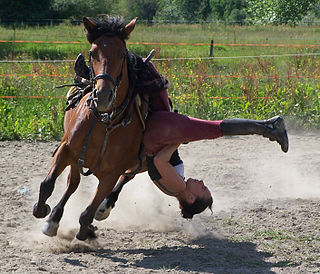
Trick riding refers to the act of performing stunts while horseback riding, such as the rider standing upright on the back of a galloping horse, using a specially designed saddle with a reinforced steel horn, and specialized kossak loops for hands and feet. The horse is likewise galloping free. Trick riding is not to be confused with equestrian vaulting, which is an internationally recognized competitive sport governed by the Federation Equestre Internationale (FEI).

Eugene Barton Evans was an American actor who appeared in numerous television series, television films, and feature films between 1947 and 1989.
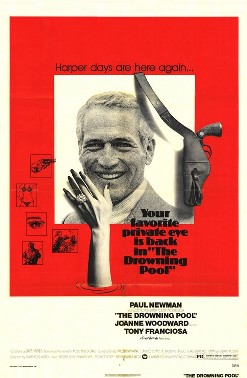
The Drowning Pool is a 1975 American mystery thriller film directed by Stuart Rosenberg, and based upon Ross Macdonald's novel of the same name. The film stars Paul Newman, Joanne Woodward, and Anthony Franciosa, and is a loose sequel to Harper. The setting is shifted from California to Louisiana.

Ellen Drew was an American film actress.

Another Gay Movie is a 2006 American romantic comedy film directed by Todd Stephens. It follows four gay friends, Andy, Jarod, Nico and Griff, who vow upon graduating from high school that they will all lose their "anal virginity" before their friend's Labor Day party. The film takes content from the 1999 teen comedy American Pie. A sequel, Another Gay Sequel: Gays Gone Wild!, was released in 2008.

Forty Guns is a 1957 American Western film starring Barbara Stanwyck, Barry Sullivan and Gene Barry. Written and directed by Samuel Fuller, the independent black-and-white picture was filmed in CinemaScope and released by 20th Century Fox.
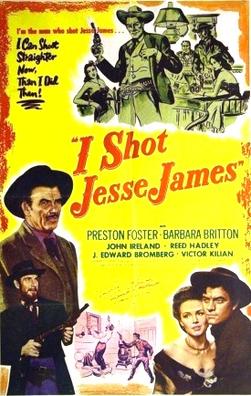
I Shot Jesse James is a 1949 American Western film starring Reed Hadley as Jesse James and John Ireland as Bob Ford. Directed by Samuel Fuller in his debut behind the camera, it portrays the murder of Jesse James by Robert Ford and Robert Ford's life afterwards. The story is built around a fictional rivalry between Ford and his eventual killer Edward O’Kelley over a woman.
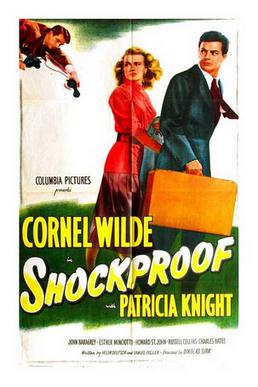
Shockproof is a 1949 American crime film noir directed by Douglas Sirk and starring Patricia Knight and Cornel Wilde. Wilde and Knight were husband and wife during filming. They divorced in 1951.

Robert Lenard Lippert was an American film producer and cinema chain owner. He was president and chief operating officer of Lippert Theatres, Affiliated Theatres and Transcontinental Theatres, all based in San Francisco, and at his height, he owned a chain of 139 movie theaters.
Lippert Pictures was an American film production and distribution company controlled by Robert L. Lippert.
Britt Lomond was an American actor and television producer. Also credited as Glase Lohman.
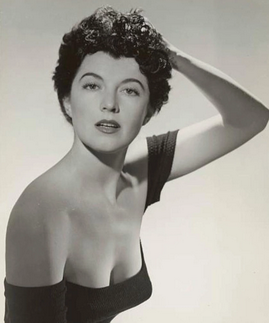
Marguerite Louise Skliris-Alvarez, known by her stage name Margia Dean was an American beauty queen and stage and screen actress of royal Greek descent, who had a career in Hollywood films from the 1940s until the early 1960s, appearing in 30 starring roles and 20 bit parts.

Davy Crockett, Indian Scout is a 1950 American Western film directed by Lew Landers and starring George Montgomery and Ellen Drew. Wartime hero Johnny McKee had a small role in the film, as did Jim Thorpe. The film was shot at the Motion Picture Centre, with filming commencing June 1948. Much of the footage was taken from the 1940 film Kit Carson, starring Jon Hall, Dana Andrews, and Clayton Moore.

The Arizona Cowboy is a 1950 American Western film directed by R. G. Springsteen and written by Bradford Ropes. The film stars Rex Allen, Teala Loring, Gordon Jones, Minerva Urecal, James Cardwell, and Roy Barcroft. The film was released on April 1, 1950, by Republic Pictures.
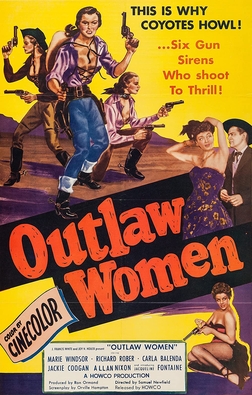
Outlaw Women is a 1952 American Western film directed by Sam Newfield and Ron Ormond and starring Marie Windsor, Richard Rober and Carla Balenda. It is set in a remote small town run entirely by women. The film was made in Cinecolor and released by the low-budget specialist Lippert Pictures.


















